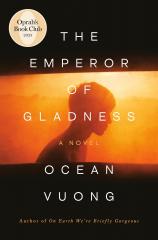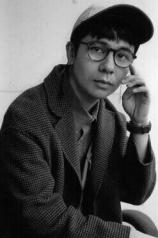Reading Group Guide
Discussion Questions
The Emperor of Gladness

1. There are two epigraphs that open the book --- one quotation spoken by Hamlet about the death of Polonius in “Hamlet,” and an excerpt from the Wallace Stevens poem “The Emperor of Ice Cream” about the true reality of death. What does the inclusion of these epigraphs invite you to think about? What do they suggest about the cycles of life and death in the novel? As Hai moves through the four seasons in the four different sections of the book, how do the recurring reminders of cyclicality affect your thinking about the fate of the characters?
2. Hai’s immigration story begins with the “ruinous wasteland” left after the American War in Vietnam, and continues with his mother and grandmother working to make sure he was the first in his family to go to college (p. 81). Hai tells Grazina that he used to dream about writing a “novel that held everything [he] loved, including unlovable things” (p. 35), a dream that is later described as a “bigger life” that he never achieved. How is the American dream portrayed through Hai’s immigration story? Is it achievable, and for whom? How does Grazina’s immigration story from Lithuania relate to the American dream?
3. Grazina tells Hai that “[t]o be alive and try to be a decent person, and not turn it into anything big or grand...is enough” (p. 251). Grazina’s perspective on enough is partly informed by the fact that she had everything, and lost it in World War II. What do you think the novel is saying about whether or not dreams can come true for these characters? What do you think the novel is saying about social class considering that the main characters are all struggling to make ends meet? What is enough for them?
4. When Hai gets hired at HomeMarket, he “regained a real, quantifiable foothold in the world,” and he had never felt “so included in something” (p. 59). What are the ways in which Hai’s relationships with his HomeMarket coworkers BJ, Maureen, Wayne and Russia provide him with a community he needs? How does HomeMarket become a real home to him? Why is Hai able to find a home and family there, and not with his mother or in college?
5. Although the cast of characters is from diverse racial, cultural and ethnic backgrounds, they find commonality in their family stories. They share laughs and meals together, and they also have shared trauma. Just as Grazina lives with the trauma of World War II, Hai and Sony, and their parents, deal with the effects of the American War in Vietnam. How do the different ways they see the world help them to learn from each other?
6. Hai has several mother figures in his life, including Grazina and Maureen. When Hai asks Maureen about how she was good to her deceased son, Paul, she responds that “when you’re somebody’s mother, nothing’s good enough” (p. 359). Considering Hai’s strained relationship with his biological mother, what do you think the role of mothers is in this novel? What are the different things each mother figure offers? Do you think Hai’s relationship with his biological mother can be repaired?
7. The novel has a fluid timeline as the past, present and future are often mixed up in the minds of characters. Hai helps Grazina relive her past, and he wonders “[W]hat did it matter which timeline they were in” (p. 252) while Maureen believes in the Mandela effect of multiple timelines existing at the same time (p. 265). What is the role of time in the novel? Why is the past so powerful for characters?
8. There are many ghosts and ghost stories in this novel: Hai comforts Grazina initially by singing her a Vietnamese song to raise the dead (p. 34), and Bà ngoai claims that the Stonewall Jackson Museum has ghosts (p. 160) and demons (p. 165). What role do you think ghosts play in this novel? Are they friendly or harmful? Who do they haunt, and why?
9. Hai argues to Sony that they don’t need to be soldiers, and that “most people are soft and scared” (p. 343). Hai says that we tell ourselves stories to make life more “bearable” (p. 344). How is the vulnerability of the characters related to their humanity? What are the different stories these characters tell themselves, and how do those stories make their lives more livable?
10. Hai explains that Noah’s death by overdose quickly followed by his bà ngoai’s death were a couple of the reasons that he dropped out of college (p. 190). What are the different ways characters cope with death in this novel, and how are characters still haunted by the deaths of others?
11. When Hai and Sony look at a photo of their mothers, Sony declares them to be “[b]eautiful, short losers,” which makes Hai wonder “[w]hat good is beauty, any beauty, if nobody wins” (p. 231). Where do you see beauty in this novel where the characters are losing so much? How would you answer Hai’s question about the role of beauty in our lives?
12. The novel often compares truth and reality to lies and illusion. What is the novel’s relationship with the truth if Hai lies to his mother about going to medical school (p. 85), and Sony knows the truth behind the lies his mother has been telling about what happened to his father (p. 368)? Why do characters lie, and what are the consequences of those lies? How might lies be kindnesses in this novel considering the truth that the lies cover?
13. At the end of the novel, Ocean Vuong leaves readers with images of both hope and darkness. He gives us a look into the future of the other main characters, as well as HomeMarket, but leaves out Hai’s future. Instead, Hai remains in the present, inside a dumpster. He is in an enclosed space, talking to his mother about the spaciousness inside people (p. 396). There are other moments of hope at the end of the novel --- Hai giving Sony the money to get Aunt Kim out of prison --- juxtaposed with a violent final image: the emperor hogs dragged to the butchery (p. 397). What ending would you write for Hai’s life? What do you make of the hopeful and tragic elements coexisting in these final moments? The relationship between hope and despair? Which theme do you think is most powerful in the story?
The Emperor of Gladness
- Publication Date: May 13, 2025
- Genres: Fiction
- Hardcover: 416 pages
- Publisher: Penguin Press
- ISBN-10: 059383187X
- ISBN-13: 9780593831878







